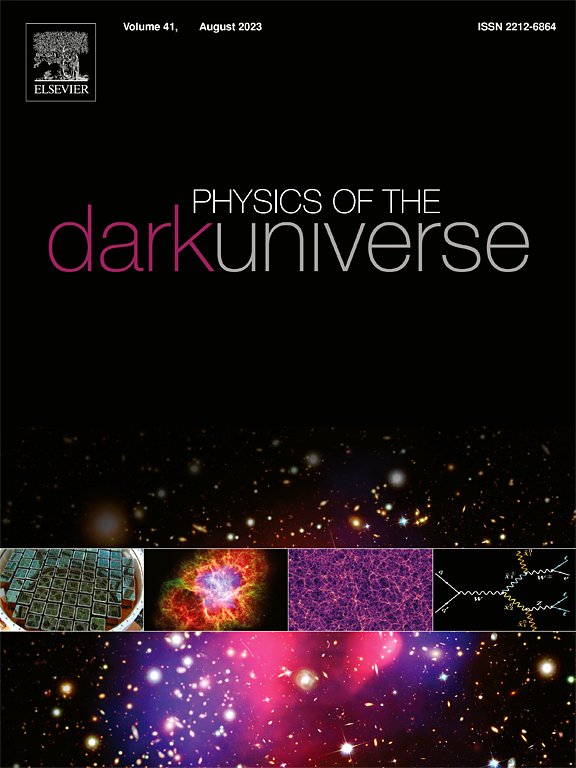修正引力理论中重子与熵比的观测约束
IF 6.4
2区 物理与天体物理
Q1 ASTRONOMY & ASTROPHYSICS
引用次数: 0
摘要
重子发生,即宇宙物质-反物质不对称的产生,仍然是理论物理学中深刻的问题之一。本研究探索重子发生的机制,并在平方能量动量理论的背景下将研究扩展到更广义的理论框架,特别是f(R,T2), f(G,T2)和f(Q,T2)。这些理论通过在能量动量平方张量的轨迹T2≡TμνTμν和基本几何标量:里奇标量R、高斯-博内不变量G和非度规标量q之间结合新的耦合来扩展传统的广义相对论。我们在每个理论中考虑两个通用模型,以探索它们对早期宇宙动力学演化的影响以及它们在产生观测到的重子不对称性中的潜在作用。通过分析高能状态下重力和粒子物理之间的相互作用,我们推导出在每种理论中重子发生的条件。此外,通过将幂律比例因子整合到我们的模型中,我们研究了它对重子发生机制和由此产生的物质-反物质不对称的影响。通过详细的数值模拟和分析计算,我们评估了每个模型在产生观测到的重子不对称性方面的可行性,有助于更深入地了解引力理论与宇宙学基本过程之间的联系。这些发现为这些理论的未来实验测试和观测限制铺平了道路。本文章由计算机程序翻译,如有差异,请以英文原文为准。
Observational constraining on baryon to entropy ratios in modified theories of gravity
Baryogenesis, the generation of the cosmic matter-antimatter asymmetry, remains one of the profound questions in theoretical physics. This research explores the mechanisms of baryogenesis and extends the investigation to its more generalized theoretical frameworks within the context of squared energy–momentum theories, specifically , and . These theories extend conventional general relativity by incorporating novel couplings between the trace of the energy–momentum squared tensor, , and fundamental geometric scalars: the Ricci scalar , the Gauss–Bonnet invariant , and the non-metricity scalar . We consider two generic models within each theory to explore their implications on the dynamical evolution of the early universe and their potential role in generating the observed baryon asymmetry. By analyzing the interplay between gravity and particle physics in the high-energy regime, we derive conditions under which baryogenesis can occur in each theory. Furthermore, by integrating the power law scale factor into our models, we examine its impact on the baryogenesis mechanism and resulting matter-antimatter asymmetry. Through detailed numerical simulations and analytical calculations, we assess the viability of each model in generating the observed baryon asymmetry, contributing to a deeper understanding of the connection between gravitational theories and fundamental processes in cosmology. These findings pave the way for future experimental tests and observational constraints on these theories.
求助全文
通过发布文献求助,成功后即可免费获取论文全文。
去求助
来源期刊

Physics of the Dark Universe
ASTRONOMY & ASTROPHYSICS-
CiteScore
9.60
自引率
7.30%
发文量
118
审稿时长
61 days
期刊介绍:
Physics of the Dark Universe is an innovative online-only journal that offers rapid publication of peer-reviewed, original research articles considered of high scientific impact.
The journal is focused on the understanding of Dark Matter, Dark Energy, Early Universe, gravitational waves and neutrinos, covering all theoretical, experimental and phenomenological aspects.
 求助内容:
求助内容: 应助结果提醒方式:
应助结果提醒方式:


